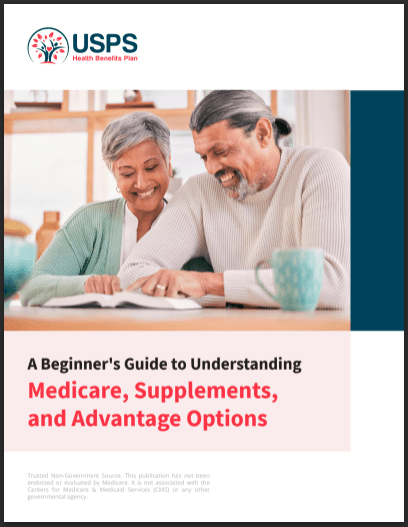Key Takeaways
- Understanding the Medicare enrollment requirements for USPS retirees in 2025 is crucial for ensuring continuous and comprehensive healthcare coverage.
- Familiarizing yourself with specific enrollment periods, eligibility criteria, and the benefits of different Medicare parts can help you make informed decisions about your healthcare options.
Medicare Enrollment Requirements for Postal Service Retirees in 2025
Medicare enrollment is a critical process for Postal Service retirees, especially with the introduction of the Postal Service Health Benefits (PSHB) Program in 2025. This article provides detailed information on Medicare Parts A and B, eligibility criteria, enrollment periods, and how the PSHB Program impacts Medicare enrollment.
Understanding Medicare Parts A and B for Postal Service Retirees
Medicare consists of several parts, each offering different types of coverage:
Medicare Part A
Medicare Part A, also known as hospital insurance, covers inpatient hospital stays, care in a skilled nursing facility, hospice care, and some home health care. Most people do not pay a premium for Part A if they or their spouse paid Medicare taxes while working for at least 10 years.
Medicare Part B
Medicare Part B covers medical insurance, including outpatient care, doctor visits, preventive services, and some home health care. Unlike Part A, Part B requires a monthly premium, which is based on the retiree’s income. Enrollment in Part B is optional but highly recommended, especially for those seeking comprehensive coverage through the PSHB Program.
Eligibility Criteria for Medicare Enrollment in 2025
To enroll in Medicare, Postal Service retirees and their families must meet specific eligibility criteria:
Age and Work History
Typically, individuals must be 65 years or older to qualify for Medicare. However, younger individuals with certain disabilities or conditions like End-Stage Renal Disease (ESRD) may also be eligible. Additionally, having a sufficient work history (at least 10 years of Medicare-covered employment) is necessary for premium-free Part A.
Special Considerations for USPS Retirees
USPS retirees must enroll in Medicare Parts A and B if they are eligible for premium-free Part A. This requirement ensures that retirees can access the comprehensive benefits offered by the PSHB Program, which replaces the Federal Employees Health Benefits (FEHB) Program for Postal Service employees, retirees, and their families starting in 2025.
Initial Enrollment Period (IEP) for USPS Retirees
The Initial Enrollment Period (IEP) is the first opportunity for most people to sign up for Medicare. It begins three months before you turn 65, includes the month of your 65th birthday, and ends three months after your birthday month.
Importance of Enrolling During IEP
Enrolling during the IEP is crucial to avoid late enrollment penalties and ensure that coverage starts as soon as possible. Missing the IEP can lead to higher premiums for Medicare Part B, which can be a significant financial burden over time.
Steps to Enroll
- Review Eligibility: Ensure you meet the age and work history requirements.
- Gather Documentation: Prepare necessary documents such as proof of age, identity, and employment history.
- Apply Online or In-Person: Submit your application through the Social Security Administration’s website or visit a local office.
Special Enrollment Periods (SEPs) for USPS Retirees
Special Enrollment Periods (SEPs) provide additional opportunities to enroll in Medicare outside the Initial Enrollment Period. These periods are available under certain conditions, such as maintaining health insurance coverage through an employer.
USPS-Specific SEPs
For USPS retirees, SEPs are particularly relevant when transitioning from employer-sponsored health plans to Medicare. For example, if you are covered under the PSHB Program and lose that coverage, you may qualify for a SEP to enroll in Medicare Part B without facing penalties.
How to Qualify for a SEP
- Employment Changes: If you retire or lose health coverage from your USPS job, you may qualify for a SEP.
- Life Events: Certain life events, such as moving to a new service area or changes in household size, can trigger a SEP.
Using SEPs Effectively
To make the most of SEPs, it’s important to report qualifying events promptly and complete the necessary paperwork within the specified time frame. This ensures continuous coverage and avoids late enrollment penalties.
Medicare Part D and Prescription Drug Coverage for Retirees
Medicare Part D provides coverage for prescription drugs. This is an optional benefit available through private plans approved by Medicare.
Integration with PSHB Program
Under the new PSHB Program, all Medicare-eligible retirees must enroll in a Medicare Part D plan, known as an employer group waiver plan (EGWP). This integration aims to provide comprehensive prescription drug coverage and reduce out-of-pocket costs for retirees.
Choosing the Right Part D Plan
When selecting a Medicare Part D plan, consider factors such as:
- Coverage: Ensure the plan covers the medications you regularly use.
- Costs: Compare premiums, deductibles, and co-pays to find a plan that fits your budget.
- Pharmacy Network: Check if your preferred pharmacies are in the plan’s network.
Impact of the PSHB Program on Medicare Enrollment
The PSHB Program, set to begin in 2025, significantly impacts Medicare enrollment for USPS retirees. This program replaces the FEHB Program and requires retirees to enroll in Medicare Parts A and B to access the full range of benefits.
Benefits of PSHB Program
The PSHB Program offers several advantages, including:
- Comprehensive Coverage: The program includes medical, prescription drug, dental, and vision coverage.
- Cost Savings: By integrating with Medicare, the PSHB Program helps reduce overall healthcare costs for retirees.
- Seamless Transition: The program is designed to provide a smooth transition from FEHB to PSHB, ensuring continuous coverage.
Enrollment Requirements
To enroll in the PSHB Program, retirees must:
- Enroll in Medicare Parts A and B: This is mandatory for accessing the full benefits of the PSHB Program.
- Complete Required Forms: Submit all necessary enrollment forms and documentation during the specified enrollment periods.
Avoiding Late Enrollment Penalties and Ensuring Continuous Coverage
Understanding Late Enrollment Penalties
Late enrollment penalties can significantly increase your Medicare premiums. For example, if you delay enrolling in Medicare Part B, you may face a 10% increase in your premium for each 12-month period you were eligible but did not enroll.
Strategies to Avoid Penalties
- Enroll During IEP: Make sure to enroll in Medicare Parts A and B during your Initial Enrollment Period to avoid penalties.
- Utilize SEPs: If you qualify for a Special Enrollment Period, take advantage of it to enroll without penalties.
- Stay Informed: Keep track of important dates and requirements to ensure timely enrollment.
Maintaining Continuous Coverage
Ensuring continuous healthcare coverage involves:
- Timely Enrollment: Enroll in Medicare Parts A and B and the PSHB Program within the required timeframes.
- Regular Reviews: Periodically review your healthcare needs and coverage options to ensure you have the best plan for your situation.
- Seek Assistance: Utilize resources provided by the USPS and Medicare to help navigate the enrollment process.
Ensuring Comprehensive Healthcare Coverage for USPS Retirees
Navigating the Medicare enrollment process is crucial for USPS retirees to ensure comprehensive and cost-effective healthcare coverage. By understanding the requirements and timelines for enrolling in Medicare Parts A and B and integrating these benefits with the PSHB Program, retirees can optimize their healthcare options and avoid costly penalties. Staying informed and proactive in managing healthcare coverage will help ensure that USPS retirees and their families receive the best possible care in 2025 and beyond.
Contact Information:
Email: [email protected]
Phone: 7605558901











